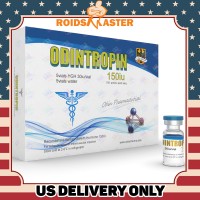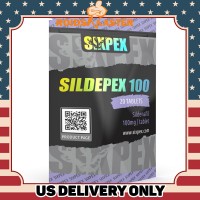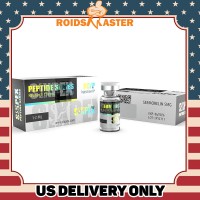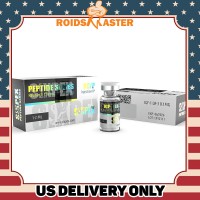- James
- 03 December, 2024
- 774
- 0
Steroids for healing injuries
Injuries are an inevitable part of athletic endeavors and everyday activities. Whether you're a professional athlete or a weekend warrior, the ability to accelerate healing can significantly impact performance, return to activity, and overall quality of life.
Advances in medical science and sports medicine have introduced various products and substances to speed up the recovery process.
Understanding Injury Healing
Injury healing is a complex biological process that involves inflammation, tissue formation, and remodeling. The speed and efficiency of this process can be influenced by various factors, including nutrition, rest, medical interventions, and the use of specific products designed to enhance recovery. Accelerating healing reduces downtime, minimizes the risk of complications, and ensures a quicker return to optimal function.
Anabolic Steroids: Controversial but Effective
What Are Anabolic Steroids?
Anabolic steroids are synthetic derivatives of testosterone, a hormone that plays a key role in muscle growth and repair. These substances are often used in sports to enhance performance, increase muscle mass, and accelerate recovery from injuries.
Benefits for Healing
Anabolic steroids can promote protein synthesis, which is crucial for muscle repair and growth. They also help reduce inflammation and suppress the immune response, which can mitigate excessive tissue damage following an injury. For instance, athletes recovering from severe muscle tears or ligament injuries may find that anabolic steroids help them regain strength and functionality more quickly.
Risks and Considerations
Despite their potential benefits, anabolic steroids carry significant risks. Long-term use can lead to liver damage, cardiovascular issues, hormonal imbalances, and psychological effects such as aggression and mood swings. Additionally, steroids are classified as controlled substances in many countries, making their non-prescribed use illegal and subject to strict regulations in professional sports. Athletes must weigh the benefits against the potential health risks and legal implications before considering anabolic steroids as a recovery aid.
Nonsteroidal Anti-Inflammatory Drugs (NSAIDs)
Role in Healing
NSAIDs, such as ibuprofen and naproxen, are commonly used to manage pain and reduce inflammation following an injury. By inhibiting the production of prostaglandins, which are chemicals that promote inflammation and pain, NSAIDs can provide significant relief and improve comfort during the healing process.
Benefits for Recovery
Using NSAIDs can help athletes maintain mobility and continue rehabilitation exercises by managing pain levels. This can lead to a more consistent and effective recovery regimen, ultimately speeding up the healing process.
Risks and Side Effects
Prolonged use of NSAIDs can lead to gastrointestinal issues, such as ulcers and bleeding, as well as kidney damage and increased risk of cardiovascular events. It is essential to use these medications as directed and consult with a healthcare professional to avoid adverse effects.

Platelet-Rich Plasma (PRP) Therapy
What is PRP Therapy?
PRP therapy involves injecting a concentration of a patient's own platelets into the injured area to promote healing. Platelets contain growth factors that facilitate tissue regeneration and repair.
Advantages for Healing
PRP therapy has been used to treat various injuries, including tendonitis, ligament sprains, and muscle tears. By enhancing the body's natural healing mechanisms, PRP can accelerate tissue repair, reduce inflammation, and improve overall recovery outcomes.
Considerations and Limitations
While PRP therapy shows promise, its effectiveness can vary depending on the type and severity of the injury. Additionally, the procedure can be costly and is not always covered by insurance. More research is needed to fully understand the long-term benefits and optimal protocols for PRP treatment.
Growth Hormone Therapy
Function in Healing
Human growth hormone (HGH) plays a critical role in tissue growth and repair. Supplementing HGH can potentially enhance healing by promoting cell regeneration and increasing protein synthesis.
Benefits for Recovery
Athletes and individuals recovering from injuries may use HGH to accelerate muscle repair, improve bone density, and enhance overall physical performance during recovery.
Risks and Ethical Concerns
HGH therapy is associated with side effects such as joint pain, insulin resistance, and an increased risk of certain cancers. Moreover, its use is banned in most competitive sports due to ethical concerns and the potential for unfair advantage. Athletes must consider these factors and adhere to regulations when contemplating HGH use.
Nutritional Supplements: Supporting Healing from Within
Protein and Amino Acids
Adequate protein intake is essential for muscle repair and growth. Supplements such as whey protein and branched-chain amino acids (BCAAs) provide the necessary building blocks for tissue regeneration, helping to speed up recovery.
Vitamins and Minerals
Vitamins C and D, zinc, and magnesium play vital roles in healing. Vitamin C is crucial for collagen synthesis, which is necessary for tendon and ligament repair. Vitamin D aids in bone health, while zinc and magnesium support immune function and muscle relaxation, respectively.
Antioxidants
Antioxidants like vitamin E and glutathione help reduce oxidative stress and inflammation, promoting a healthier healing environment and potentially accelerating recovery.
Topical Treatments: Localized Healing
Arnica and Other Herbal Remedies
Topical treatments such as arnica gel or cream are popular among athletes for their anti-inflammatory and pain-relieving properties. These natural remedies can be applied directly to the injured area to reduce swelling and discomfort.
Cold and Heat Therapy
Applying ice (cold therapy) immediately after an injury can minimize swelling and numb pain. Conversely, heat therapy applied later in the healing process can increase blood flow and relax muscles, aiding in tissue repair. Combining these therapies with other treatments can enhance overall recovery.
Emerging Treatments: The Future of Injury Healing
Stem Cell Therapy
Stem cell therapy involves injecting stem cells into the injured area to promote regeneration and repair of damaged tissues. This cutting-edge treatment holds promise for accelerating healing in conditions such as cartilage damage, tendon injuries, and muscle tears.
Hyperbaric Oxygen Therapy (HBOT)
HBOT involves breathing pure oxygen in a pressurized environment, which can enhance the body's natural healing processes by increasing oxygen delivery to tissues. This therapy is being explored for its potential to speed up recovery from various injuries and surgical procedures.
Balancing Benefits and Risks
While numerous products and substances can accelerate injury healing, balancing their benefits against potential risks is crucial. Anabolic steroids and growth hormone therapy, for instance, offer significant recovery advantages but come with severe health risks and legal implications. NSAIDs and nutritional supplements provide safer alternatives but must be used appropriately to avoid adverse effects.
Best Practices for Accelerating Healing
Consult Healthcare Professionals
Consult with healthcare professionals before incorporating any product or substance into your recovery regimen. They can provide personalized advice based on your specific injury, health status, and recovery goals.
Follow Evidence-Based Protocols
Rely on treatments and products supported by scientific research. Emerging therapies like PRP and stem cell therapy show promise, but their protocols should be guided by clinical evidence to ensure safety and efficacy.
Prioritize Nutrition and Rest
Proper nutrition and adequate rest are fundamental to the healing process. Supplements can aid recovery, but a balanced diet rich in essential nutrients and sufficient sleep are equally important for optimal healing.
Conclusion
Accelerating the healing of injuries involves a multifaceted approach that includes medical treatments, nutritional support, and sometimes the use of specialized products and substances. Anabolic steroids and growth hormones can offer significant benefits for recovery but come with some risks and ethical concerns. Safer alternatives like NSAIDs, PRP therapy, and nutritional supplements provide effective support for healing with any significant health risks.
For ore healing products you can read following articles:
What is BPC-157?
What is IGF1-LR3?
What is TB-500?
Related Products
Odintropin 150iu (no Water), Odin Pharma
Substance: Somatropin Active Dosage: 30iu/vialForm: 5 x 30iu vial (without water)Cate..
$450.00 $450.00
Sildepex 100, Sixpex
Name: Sildepex 100, SixpexEffective substance: Sildenafil citrateContent: 100mg/tab (20 tablet..
$45.00 $45.00
Sermorelin 5mg, Sixpex
Substance: Active Dosage: 5mg/vialForm: 1x 2ml vialCategory: Injection IPDosage: depends from B..
$79.00 $79.00
IGF1-LR3, SIXPEX
Substance: Long Chain Insulin Growth FactorActive Dosage: 0.1mg/vialForm: 1 x 1ml vialCategory:..
$69.00 $69.00
.jpg)



